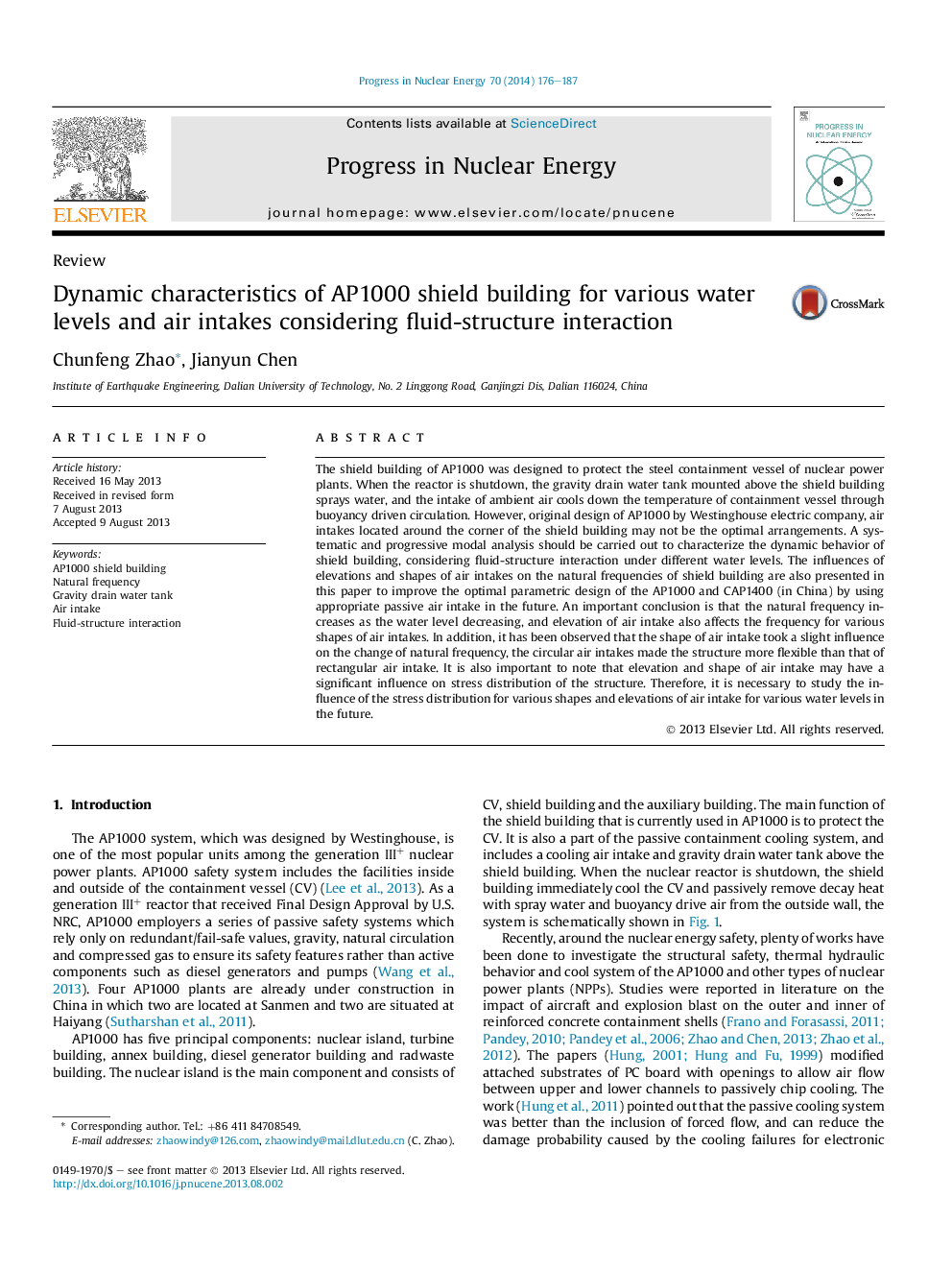| Article ID | Journal | Published Year | Pages | File Type |
|---|---|---|---|---|
| 1740773 | Progress in Nuclear Energy | 2014 | 12 Pages |
•Dynamic characteristics of the shield building are obtained from finite element analysis.•The influence of various water levels on natural frequency is investigated.•Elevations and shapes of air intakes in shield building are studied and compared.•Fluid-structure interaction of water tank is considered.
The shield building of AP1000 was designed to protect the steel containment vessel of nuclear power plants. When the reactor is shutdown, the gravity drain water tank mounted above the shield building sprays water, and the intake of ambient air cools down the temperature of containment vessel through buoyancy driven circulation. However, original design of AP1000 by Westinghouse electric company, air intakes located around the corner of the shield building may not be the optimal arrangements. A systematic and progressive modal analysis should be carried out to characterize the dynamic behavior of shield building, considering fluid-structure interaction under different water levels. The influences of elevations and shapes of air intakes on the natural frequencies of shield building are also presented in this paper to improve the optimal parametric design of the AP1000 and CAP1400 (in China) by using appropriate passive air intake in the future. An important conclusion is that the natural frequency increases as the water level decreasing, and elevation of air intake also affects the frequency for various shapes of air intakes. In addition, it has been observed that the shape of air intake took a slight influence on the change of natural frequency, the circular air intakes made the structure more flexible than that of rectangular air intake. It is also important to note that elevation and shape of air intake may have a significant influence on stress distribution of the structure. Therefore, it is necessary to study the influence of the stress distribution for various shapes and elevations of air intake for various water levels in the future.
Graphical abstractFigure optionsDownload full-size imageDownload as PowerPoint slide
